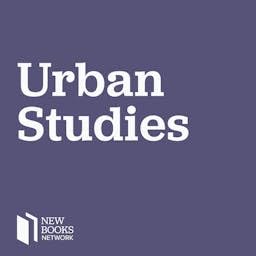Shifting the focus of AIDS history away from the coasts to the Twin Cities of Minneapolis and St. Paul, this impressive book uncovers how homonormative political strategies weaponized the AIDS crisis to fuel gentrification. During the height of the epidemic, white gay activists and politicians pursued social acceptance by assimilating to Midwestern cultural values. This approach, Dr. René Esparza argues in From Vice to Nice: Midwestern Politics and the Gentrification of AIDS (UNC Press, 2025), diluted radical facets of LGBTQ activism, rejected a politics of sexual dissidence, severed ties with communities of color, and ushered in the destruction of vibrant queer spaces.Drawing from archival research, oral histories, and urban studies from the 1970s through the 1990s, Dr. Esparza illustrates how the onset of the AIDS epidemic provided a pretext for further criminalization of perceived sexual deviance, targeting sex workers, “promiscuous” gay men, and transgender women. More than the criminalization of people and behaviors, this time period also saw increased targeting of urban venues such as bathhouses, adult bookstores, and public parks where casual, anonymous encounters occurred. Cleansing the city of land uses that undermined gentrification became a protective measure against AIDS, and the most marginalized bore the brunt of the ensuing surveillance and displacement. From Vice to Nice illuminates how, despite purporting seemingly progressive values, LGBTQ Midwestern politics of conformity leveraged the AIDS crisis to further instigate racial and sexual exclusion and fundamentally alter the urban landscape. This interview was conducted by Dr. Miranda Melcher whose book focuses on post-conflict military integration, understanding treaty negotiation and implementation in civil war contexts, with qualitative analysis of the Angolan and Mozambican civil wars. You can find Miranda’s interviews on New Books with Miranda Melcher, wherever you get your podcasts. Learn more about your ad choices. Visit megaphone.fm/adchoices
Voir plus
Voir moins
 44 min
44 min Dec 14 202530 min
Dec 14 202530 min 1 h et 10 min
1 h et 10 min Dec 11 202552 min
Dec 11 202552 min 1 h et 13 min
1 h et 13 min 56 min
56 min 1 h et 11 min
1 h et 11 min 52 min
52 min
